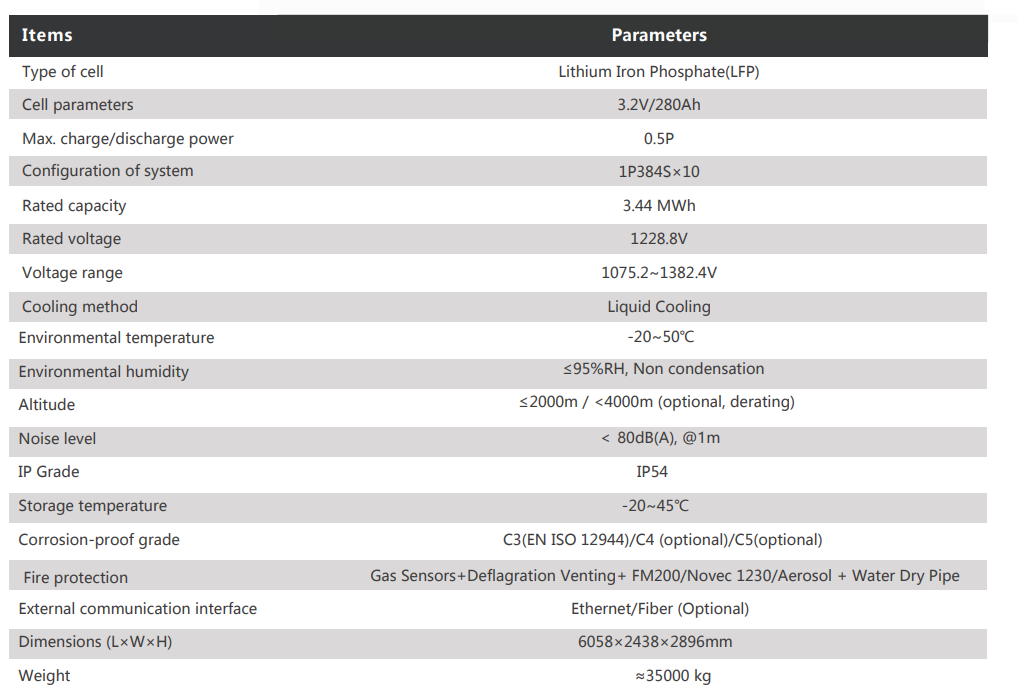| Brand | Wone |
| Model NO. | 3.44MWh Battery utility-scale energy storage battery System |
| Rated capacity | 3.44MWh |
| Max discharge power | 0.5P |
| Series | Industrial&Commercial energy storage |
Description
It is a new generation of utility-scale energy storage system with advanced design principle. The system features of effective liquid cooling, higher efficiency, higher safety and Intelligent O&M. The modular design can satisfy the majority of demanding applications andemerging scenarios,and deliver the most services and value to customers and the grid.
Features
Non-uniform and refined pipeline design, achieving temperature difference <2.5C.
Multiple liquid cooling control modes and auxiliary power consumption decrease by 20%.
Adopting cluster management technology and system efficiency increases by 1%.
Cell to Cell active balance ensures the consistency between cells.
Multiple level protection from cell to system to prevent from uncontrolled heat spread.
Equipped with deflagration venting, gas fire protection and water suppression to ensure the final protection.
Smart management and real time monitoring ensures high efficient commission.
Compact design with side-by-side layout and standard 20ft container design ensures 6.88MWh/40FT.
Release existing transmission capacity and relieve network peak load.
Supplement to the electricity supply, reducing the cost and ensuring the stable power network.
Parameters

What is air cooling?
The basic principle of air cooling technology is to take away the heat generated by battery cells through flowing air, thus keeping the battery temperature within a reasonable range. As a heat transfer medium, air can achieve heat exchange through natural convection or forced convection.
Natural convection:Natural convection refers to the phenomenon in which air flows by itself due to the difference in air density caused by temperature differences.In some cases, natural convection can be used to achieve simple thermal management, but this is usually not sufficient to meet high-intensity or high-density energy storage requirements.
Forced convection:Forced convection is to accelerate air flow through fans or other mechanical devices, thereby improving heat exchange efficiency.In container energy storage systems, forced convection is usually used to achieve effective thermal management.






